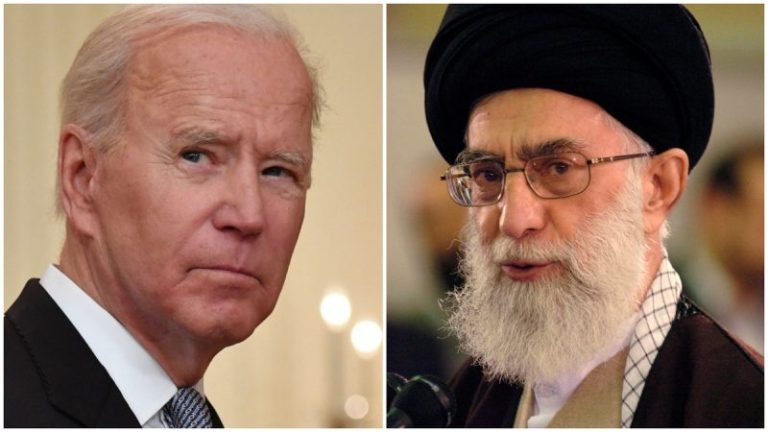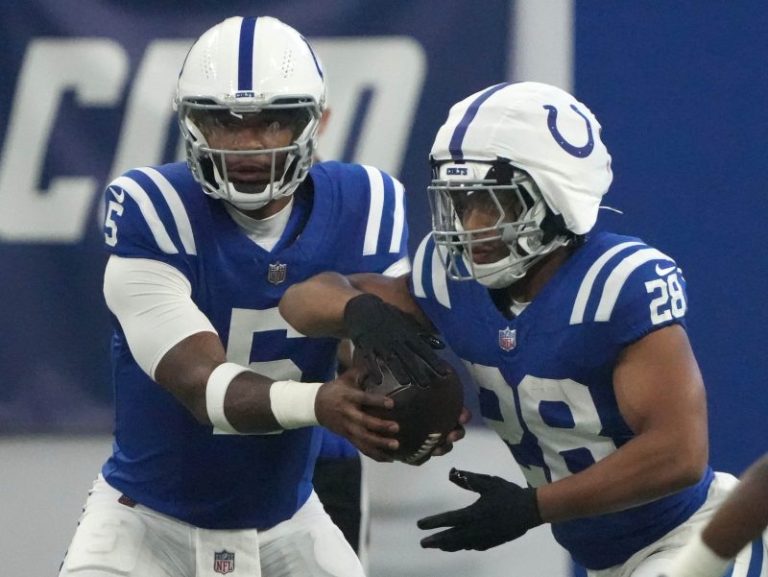PARIS — It was an amazing experience to cover my first Olympic Games. As someone who for years has meticulously planned schedules to maximize my Olympic streaming at home, getting to be here in person was a joy and perhaps the highlight of my career.
Two memories stand out:
Prior to covering the women’s synchronized platform diving competition, I was asked by a Chinese television station for an interview. They wanted my thoughts, as an American, about China’s diving tandem of Quan Hongchan, 17, and Chen Yuxi, 18. The request was as natural as if I’d asked them about Simone Biles or LeBron James. But I politely declined, explaining how I didn’t know much beyond names and reputations.
Once the competition began, though, I understood: These two are a very big deal. Their performing in tandem from a 10-meter platform was the most beautiful and impressive thing I witnessed in these Olympics. The synchronization was flawless and stunning. Of course, they won gold in a rout, and afterward, Chinese media swarmed the two teenagers, who sheepishly answered questions best they could between embarrassed smiles. It was a lesson to me about how sports can be both universal and surprisingly disparate. That on this big planet we’ve got, something so significant in one massive country can go mostly unnoticed in another.
2024 Olympic medals: Who is leading the medal count? Follow along as we track the medals for every sport.
I’ll admit, too, feeling a twinge of Olympic envy at the national pride displayed by other countries at venues (and the boisterous French fans in particular). Just because it feels like we’re such a mess back home, with too many influential politicians and polemics spreading anger and division for their own self-interest.
I wish all Americans had been with me by the 18th green at Le Golf National, watching Scottie Scheffler, a PGA Tour star who has won millions, sob on the podium after winning a tournament worth only a tiny fraction of that amount in dollars. I can tell you that there is nothing like hearing the ‘Star-Spangled Banner’ while in another country. Nothing. And when Scottie cried, my eyes watered up a bit, too. — Gentry Estes
A trip to Normandy with USA Wrestling and a request for a cigarette
PARIS — My first Olympics are in the books and the best way to describe them is as an exhaustively invigorating experience.
I saw 16 different Olympic disciplines in my 19 full days on the ground, logged more miles on trains than I ever have in my life and came away grateful for the professional challenge. After more than a decade covering the Detroit Lions for the Detroit Free Press, it was an interesting change of pace to spend three weeks reporting on new sports and new people.
Touring the Olympic Village was fascinating, watching world-class athletes win and lose and handle the highs and lows of competition was enlightening, and visiting Normandy with U.S. wrestler Mason Parris, whose great-grandfather stormed the beaches there 80 years ago, was an experience I won’t soon forget.
But what I’ll remember most about these Olympics are the people.
The Spanish soccer fans singing joyously on the train on their way to a game. The Australian kayak contingent dancing proudly on the banks of Vaires-sur-Marne Lake after their flag bearer, Jessica Fox, capped her career with gold. Even the Greek reporter (I think he was a reporter, at least) who burst into the media center looking to bum a cigarette for the country’s wrestling coach.
The long nights and early mornings weren’t always pleasant, and getting a text from my 9-year-old asking when I was coming home so we could play catch almost broke me. But the Olympics were a reminder of the joys, big and small, we all need in life no matter who we root for or where we’re from. — Dave Birkett
15 minutes of joy watching Katie Ledecky in 1,500
PARIS — I’ve watched the fastest swimmers in the world compete for most of my life, but never in person until the Paris Olympics.
Professionally, covering the Olympics, and specifically Olympic swimming, wasn’t just a goal; it was the goal. And it wasn’t until the first night of swimming – watching Katie Ledecky, Ariarne Titmus and Summer McIntosh face off in the women’s 400 freestyle – that it hit me. I was finally there, watching it with my own eyes and able to ask my own questions.
And it was exhilarating, better than I imagined, in large part thanks to the raucous fans creating the wildest atmosphere I’ve ever seen at a swim meet. Léon Marchand, Sarah Sjöström, Torri Huske and so many more stars made it the most incredible nine-day stretch of my professional life.
Among the many moments I’ll never forget was Ledecky dominating the 1,500 free like she does. But it was about more than watching her crush it.
When I was a kid, I remember being so perplexed that women couldn’t swim the 1,500 — only men — in the Olympics. The longest distance for women in the pool was the 800. I swam my first mile when I was 10; why couldn’t the fastest women in the world do it at the Games? Finally in 2021 in Tokyo, it was added to the lineup.
Ledecky is the one and only women’s 1,500 Olympic champion, and that won’t be the case forever. But seeing her race in an event women were once thought to be too fragile for — following a correction of an antiquated mentality — was incredible.
I got chills many times throughout Olympic swimming, but I think they were with me for all 15 1/2 minutes of the women’s 1,500. And my kid self was overjoyed seeing it in person. — Michelle Martinelli
A gold medal for a dedicated volunteer at cycling
Give Kalani Kayser a gold medal.
There were some 45,000 Paris Olympics volunteers, after all, more than four times the number of athletes. Surely the best of the best deserve a medal ceremony, and this judge is scoring Kayser’s performance as a perfect 10.
When the Games began, the first venue I was assigned to was the Grand Palais, which served as the media center for road cycling events. It’s a massive, 56-floor Parisian landmark of 775,000 square feet, and it had to be navigated in one direction to reach the mixed zone, where reporters speak to athletes post-event, and an entirely different direction (and floor) to reach the press conference.
One wrong turn, and you’re lost. So imagine the stress when I arrived to cover road cycling only to realize that A) My laptop Wi-Fi was failing, and B) poor signage and the sheer size of the Grand Palais gave me zero chance of finding the mixed zone and press conference on my own. Keep in mind, this trip was not only my first Olympics, but my first trip to Europe as well, and I arrived understanding about six words in French.
Kayser to the rescue.
With a warm smile and perfect English, the Colorado native not only helped me through the Wi-Fi snag, but also walked me − not pointing or spouting directions, but actually taking me − to the key locations I needed to be familiar with. All told, he probably spent an hour with me, and there were maybe eight volunteers trying to serve well over 100 media.
He was so helpful, I took note of his name. Told him I wouldn’t forget him if I received an exit survey on volunteer help. I haven’t gotten a survey.
But I’ve got this. Thanks, Kalani. — Chase Goodbread
The smallest Olympic fans in Paris and the athletes I’ll remember
PARIS — I get asked frequently what the best part of my job is. My answer remains the same, no matter the assignment or the venue: It’s the people.
Whether we’re talking about athletes, coaches, colleagues or fans, it’s always the people — and often, their kindness — who leave the biggest impression. That’s definitely been the case for me in covering my first Olympics.
It started before Paris, when I was chatting with Jordan Larson, one of the best volleyball players in the history of the U.S. She asked if Paris would be my first Olympics. When I said yes, she responded with enthusiasm, telling me she couldn’t wait to hear what I thought, gushing about how much fun I would have because there’s nothing quite like watching people from all over the globe come together to celebrate sport.
I’ve found her to be more than accurate.
I’ll remember people like Ashleigh Johnson, the best water polo goalie in the world, talking about her sport’s weird, wonderful new relationship with rapper Flavor Flav and her passionate insistence that he would help bring new eyeballs to water polo.
From track, I’ll remember Gabby Thomas’ joy at the finish line and Sam Kendricks’ smirk.
I’ll remember the fans, too, particularly the home crowd’s volume. I think I’m going home to Portland, Oregon, having permanently lost my hearing thanks to hundreds of thousands of French residents. Will it be like that in Los Angeles in 2028 with Americans screaming themselves hoarse? I hope so.
My biggest takeaway from the Games – other than the fact that you will climb more stairs than you ever have in your life – is that there’s no party like a Brazilian crowd party.
I’ll remember the littlest Olympic fans too, from the toddlers hanging around USA Basketball to the young kids able to spend time with their parents in the first-ever nursery in the Athlete Village (provided, fittingly, by super mom and super Olympian Allyson Felix).
Mostly I’ll remember the 4-year-old boy on one of the many trains I took, visiting from Spain and going to every Olympic event his parents could get tickets to. “I’m going to weightlifting!” He told me, doing his best Hulk flex.
Will he be an Olympian some day? I hope I get to cover more Games and find out. — Lindsay Schnell
Getting comfortable on the red carpet and interviewing US stars
I tucked my hair behind my ears, took a deep breath and stepped onto the red carpet. Well, technically it wasn’t an actual carpet but instead a chic track that twisted around the egg-shaped Louis Vuitton Foundation. I was waiting with my colleague Sandy Hooper for some of the biggest celebrities and athletes in the world to arrive, and she could sense my nerves.
‘Relax,’ she said. ‘They’re just people.’
This is a mantra I frequently repeated to myself throughout my first Olympics as Paris reminded the world what a Games is supposed to be – a glamorous intersection between celebrities, the best athletes in the world and normal people like you or me.
Throughout my experience reporting on the ground in Paris I’ve been floored by the way that the city made these Games a spectacle that all attendees could experience, not just the VIPs. From purple and pink arenas, to the utilization of famous architecture like the Grand Palais, to hosting the opening ceremony on the Seine, there’s a special energy and awe felt by all spectators.
By the end of the Games, I was interviewing gold medalists with ease, making jokes about the weight of their medals and chatting with their parents. I talked to Simone Biles about the boot on her foot and got told I was nosey. I asked Stephen Nedoroscik about what it’s like to become an internet sensation. And when I asked Tara Davis-Woodhall what kind of summer she was having, she smiled and responded with ‘a golden one.’
And I think that sums it up better than I ever could. This summer was golden for the USA, for athletes, for celebrities, for fans, and for our mighty team of journalists here in Paris. — Sydney Bergan
The USA TODAY app gets you to the heart of the news — fast.Download for award-winning coverage, crosswords, audio storytelling, the eNewspaper and more.
This post appeared first on USA TODAY










